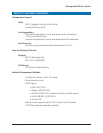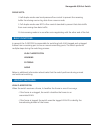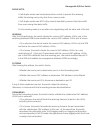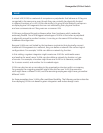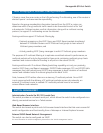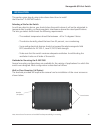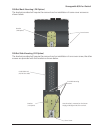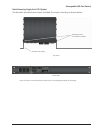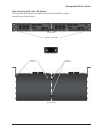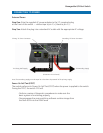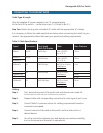
Manageable 8/9-Port Switch
User’s Manual 10
REMOTE VLAN MEMBERSHIP
Additionally to providing network management tools that allow network administrators to
statically add and delete VLAN member ports, the switch also supports GVRP (GARP VLAN
Registration Protocol). GVRP allows for dynamic registration of VLAN port members within
switch and across multiple switches.
Other than supporting dynamic updating of registration entries in a switch, GVRP is
used to communicate VLAN registration information to other VLAN-aware switches,
so that a VLAN member can cover a wide span of switches on a network.
GVRP allows both VLAN-aware workstations and switches to issue and revoke VLAN
memberships. VLAN-aware switches register a propagate VLAN membership to all
ports that belong to the active topology of the VLAN.
VLAN CONFIGURATION
The switch provides a Local/Remote Management Console Interface for VLAN
configuration and management. An SNMP-based VLAN MIB is also provided.
INTRA-VLAN COMMUNICATION
The switch supports intra-VLAN communication through hardware as described in
"Basic Functions" section.
INTER-VLAN COMMUNICATION
The switch supports Inter-VLAN communication using CPU-based routing software.
GVRP (GARP VLAN Registration Protocol)
IGMP SNOOPING AND IP MULTICAST FILTERING
In addition to network management tools that allow network administrators to statically
add and delete VLAN member ports, the routing switch supports GARP VLAN Registration
Protocol (GVRP). GVRP supports dynamic registration of VLAN port members within a switch
and across multiple switches.
In addition to dynamically updating registration entries with a switch, GVRP is used to
communicate VLAN registration information to other VLAN-aware switches, so that
members of a VLAN can cover a wide span of switches on a network.
GVRP allows both VLAN-aware workstations and switches to issue and revoke VLAN
memberships. VLAN-aware switches register and propagate VLAN membership to all
ports that are part of the active topology of the VLAN.
The Internet Group Management Protocol (IGMP) runs between hosts and their immediately
neighboring multicast routers. The protocol’s mechanisms allow a host to inform its local
router that it wants to receive transmissions addressed to a specific multicast group.
Routers periodically query the LAN to determine if known group members are still active.



